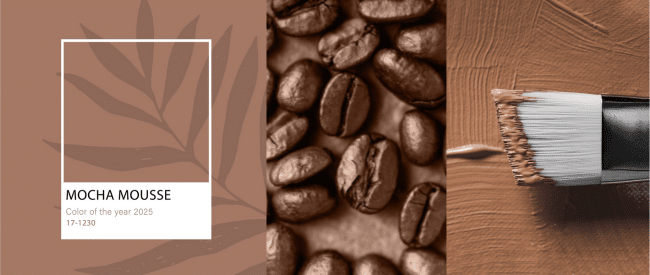For the past quarter-century, Pantone has offered a master class in leveraging the power of color to capture consumer imagination, engagement and spending by unveiling an annual color of the year.
Pantone’s 2025 Color of the Year is Mocha Mousse, a milk-chocolate brown that the company says represents the global spirit of the times centered on comfort, connection with the natural world and simple yet rich pleasures such as chocolate, coffee and cocoa. As in years past, a host of major brands have coordinated with Pantone to introduce cell phones, earbuds, Post-It® notes, furniture, clothing, accessories, shoes and many other consumer items in Mocha Mousse.
While the annual Pantone choice may not always work well for billing statements, explanations of benefits, reservation confirmations and other transactional information, color can play a key role in improving the customer communications experience. A better experience not only strengthens customer satisfaction but prompts consumers to follow through on the calls to action in the communications, from paying a bill and applying for a special refinancing offer to booking another vacation and signing up for e-statements and text messaging.
Colorful communications
While full color has long been used to enhance marketing materials, leading companies are catching up with the strategic use of color in their customer communications. Their transactional communications often use color to call out key billing and payment information, such as the amount due, due dates, and payment options.
Customer communications that effectively use color and white space deliver better business results than those comprised of a wall of black-and-white text. The positive impact of color communications on engagement and action has been well-documented over the years, including by a Harris Interactive survey of more than 2,100 consumers for Xerox, which reported:
- 76% find information faster if presented in color
- 43% are more likely to pay a bill on time if the due date is highlighted in color
- 31% are more likely to pay the FULL amount due
Research also shows that color increases brand recognition by up to 80% compared to monochrome images. So companies are increasingly reinforcing their branding and delivering a consistent brand experience across channels and interactions by incorporating their brand colors in logos and elsewhere in paper communications, emails and now MMS text messages.
___________________________________
Download our white paper:
Integrating Communications and Payments Improves Customer Experience
___________________________________
Capitalizing on color
Technological advances in developing and distributing customer communications make it simple and cost-effective to add color.
- Customer communications management (CCM) platforms give companies the control and agility to create, personalize and change billing statements, past-due notices, welcome letters, payment confirmations, policy updates, inserters, member/loyalty cards, HOA election materials and other customer communications. An omnichannel communication platform not only simplify meeting customer preferences for receiving their preferred mix of paper communications, email and text messages but also ensure the look and feel of all communications delivers a consistent brand experience.
- High-speed color inkjet printers produce materials with variable color for each print run or even each document for the same cost as black-and-white. Experienced print and mail outsourcing partners should include this feature.
- HTML color-enriched emails have been around for years, given that adding color incurs no additional cost. For e-statements and other communications with personal or sensitive information, most emails serve as a gateway with secure links to these documents. Savvy companies ensure continuity for their customers with a similar or related color scheme for the actual communications.
- MMS text messaging, or multi-media messaging service, allows companies to add color images and logos along with links and messages of up to 1,000 characters. MMS offers new ways to engage customers and present calls to action compared to traditional text-only messages, also known as short message service (SMS), which limits messages to 160 characters, including links. The look of SMS vs. MMS is much like the difference between plain text emails and HTML emails, which include company logos, different fonts, and colorful images and backgrounds.
As Pantone’s success with its annual choices makes clear, color serves as more than just a visual cue in communications to direct attention to key messages and actions and to strengthen brand awareness. Color can influence certain emotions, often subconsciously, making it an important element of strategic customer communications programs focused on improving CX and outcomes.
Contact us for more information about adding color to drive a better customer communications experience. our game-changing CCM platform combined with expert print and mail outsourcing services help you level up your customer experience.







